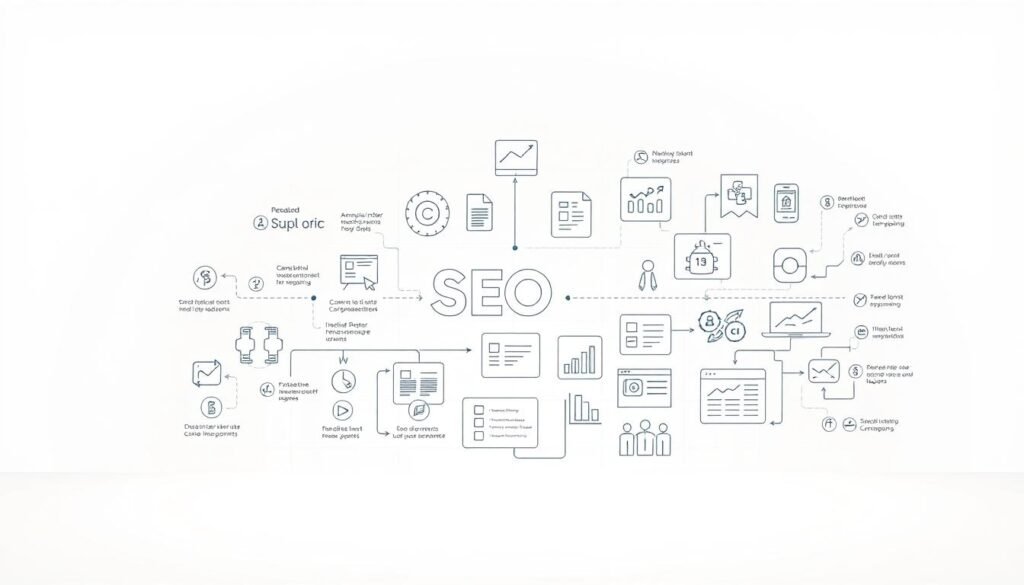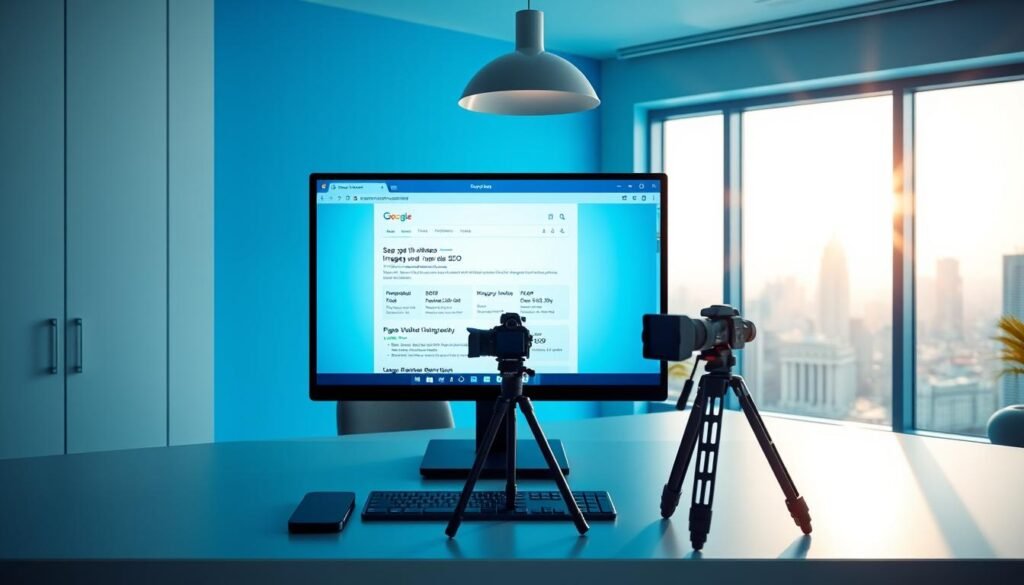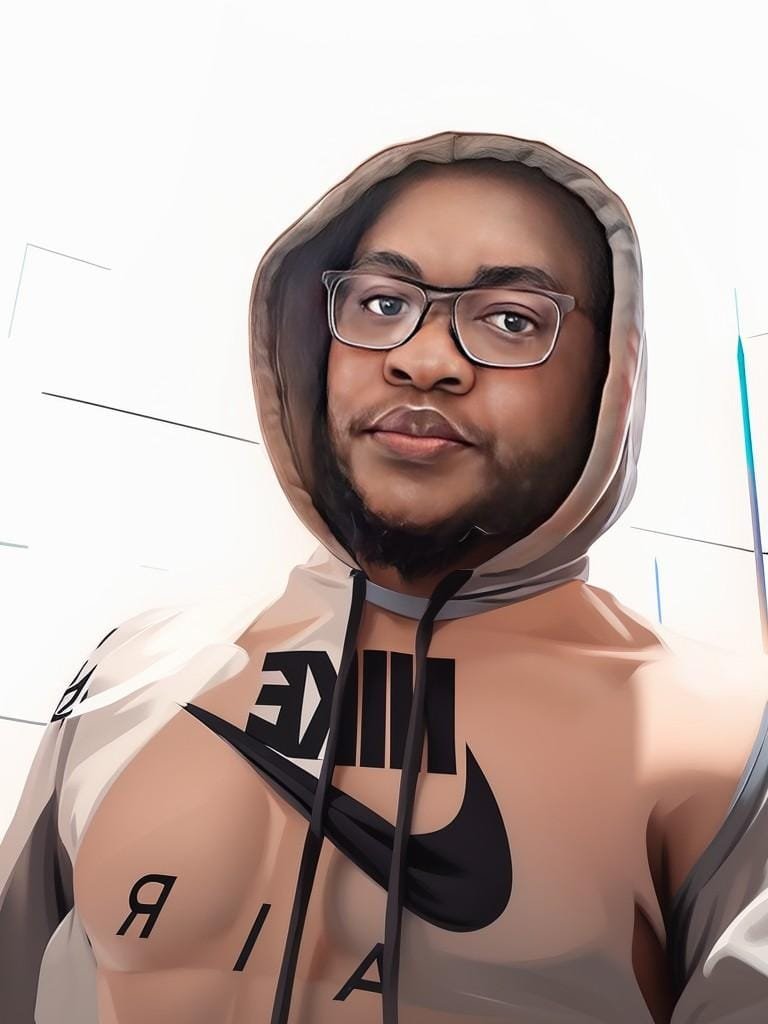Yes—graphic designers can earn well, but how much depends on role, location, and skill set.
I start with the facts: national data shows a median annual salary around $61,300 (May 2024), and top roles such as art direction or senior web design often exceed $100,000. I review pay ranges and the project types clients pay for so you get a realistic view.
My approach looks past headlines. I measure take‑home pay after taxes and benefits, and I weigh cost of living across U.S. markets. That helps answer the core questions about whether a career in this field meets your financial goals.
I also explain what contemporary design work includes—branding, packaging, websites, apps—and which specialties tend to lift earnings. A degree helps in some settings, but portfolio strength and results are the true income drivers.
This intro frames the rest of the guide: salary data, top earning factors, career paths, and practical steps to increase your amount over time.
Table of Contents
ToggleKey Takeaways
- The U.S. median for this role is about $61,300 as of May 2024.
- Earnings vary by state, industry niche, and responsibility level.
- Specialties like web and art direction often pay more than entry roles.
- Portfolio, results, and client quality matter more than a degree alone.
- I evaluate income by take‑home pay, benefits, and local costs.
My take on the question: can graphic designers make good money in the United States today?

My view is practical: pay in the field depends on choices more than luck. Median salary sits near $61,300 (May 2024), but that number hides wide swings by state, industry, and employer type.
I see five core factors that move earnings: education, experience, skills, employer, and location. Employers often prefer a bachelor or related degree, yet a strong portfolio and up‑to‑date software skills can overrule formal credentials.
“When you show measurable results, salary talks change fast.”
- I believe intentional skill stacking and niche focus raise ceilings for a career in design.
- Metro markets and tech or media employers usually offer higher pay than small markets.
- A hybrid path—steady job plus selective freelance—often boosts total compensation over time.
| Factor | Why it matters | Typical effect | Action |
|---|---|---|---|
| Education | Signals base training | Moderate | Consider degree or targeted courses |
| Portfolio | Shows real results | High | Build niche case studies |
| Location | Market demand and pay | High | Pursue remote roles or move |
| Skills | Software and systems | High | Upskill in tools and UX |
Bottom line: with strategy and focused effort, a graphic designer can reach solid earnings and, with specialization, push into higher brackets most people overlook.
What graphic designers earn right now: salary snapshots and ranges
The latest numbers reveal how pay for visual design work stacks up across markets.

National median, top earners, and take‑home pay
The national median for this role is about $61,300 (May 2024). That sits above the 2019 median of $52,110 and shows steady growth in recent years.
The lowest 10% earn under $30,370 while the top 10% exceed $86,510. Related digital roles, like web developers and digital designers, report higher medians near $95,380 and much larger top‑end pay.
“Take‑home pay depends heavily on taxes, benefits, and state rates.”
How pay shifts by state and metro areas
Pay clusters at the high end in large metros. For example, New York is around $81,370 and California about $80,240. Washington and Massachusetts track near $73K.
Smaller markets often sit below the national median. I always weigh headline salary against cost of living before assessing a job offer.
Industry and role differences
Industry affects the amount significantly. Specialized design services average above $63,400. Advertising and PR sit near $59,700, while publishing averages about $44,690.
Level matters: juniors usually start lower, mid‑level designers often fall in the $50K–$70K band, and senior roles push well past that—especially in tech or product work.
| Category | Median (approx.) | Notes |
|---|---|---|
| National median | $61,300 | May 2024 data |
| Top 10% | > $86,510 | Experienced leads, directors |
| New York / CA | $80K–$81K | Higher cost metros |
| Publishing | $44,690 | Lower industry median |
The biggest factors that move a graphic designer’s salary up or down
Salary shifts most when three areas line up: proven skills, clear results, and market demand.
I prioritize portfolio strength above almost everything else. A focused case study that shows measurable results shortens interviews and raises the salary band I’m offered.
Skills, experience level, and portfolio strength
Experience only helps when it includes shipped projects with metrics—engagement, conversions, or revenue. Time served without outcomes rarely moves offers.
I keep a running record of before/after metrics so I can negotiate with evidence rather than opinion.
Location, industry demand, and type of employer
Location matters. States like New York, California, Washington, and Massachusetts post higher pay, but I weigh that against housing and taxes to judge real purchasing power.
Industry demand sets the ceiling. Specialized services and advertising/PR typically pay more than publishing. Product-led companies often offer higher base pay and equity than small agencies.
“Portfolio signals results faster than a degree alone.”
- I tailor my portfolio to the roles I target, highlighting solved problems and outcomes.
- I upskill in areas companies value now—design systems, accessibility, and cross-functional process.
- I partner with product and marketing to increase visibility and compensation trajectory.
| Factor | Impact | Action |
|---|---|---|
| Portfolio | High | Build case studies with metrics |
| Experience | Moderate–High (if results shown) | Ship projects and track outcomes |
| Location & Industry | High | Target high-demand markets or remote roles |
| Employer Type | Varies | Choose product-led firms for pay; agencies for rapid skill growth |
Can graphic designers make good money? My honest breakdown of earning paths
Let’s look at practical earning routes: freelance, agency, and in‑house roles, and how they differ. I outline typical ranges by level and the moves that lift pay over time.
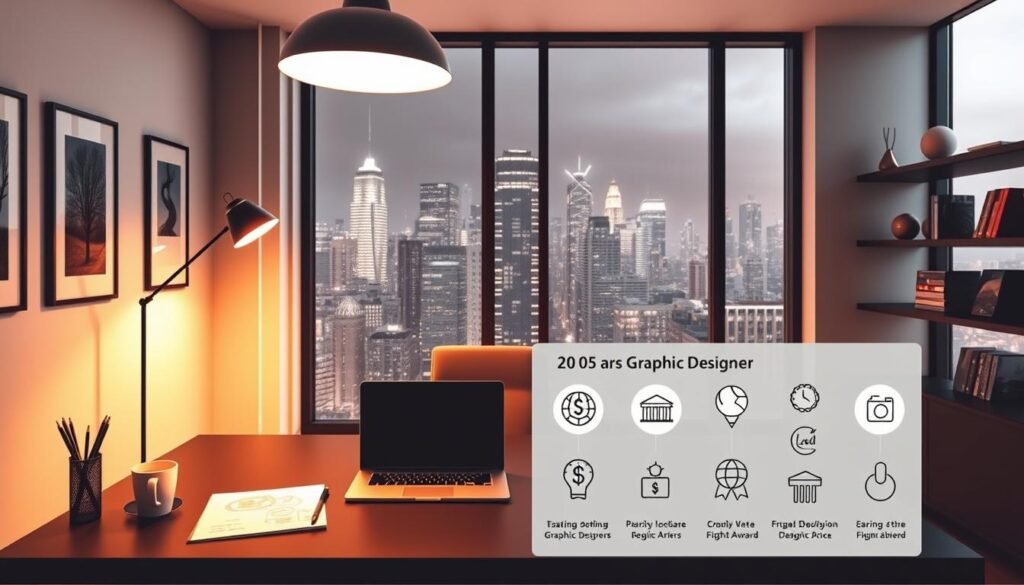
Freelance vs in‑house vs agency: how each model affects income
Freelance can out‑earn a steady job when you keep a pipeline and sell retainers or licensing. It requires sales and ops work but offers flexibility.
In‑house gives stability, benefits, and predictable hours. Base salary may cap upside but total compensation often includes bonuses and paid time off.
Agencies accelerate portfolio growth and expose you to varied projects. The pace is intense, but that breadth helps you later command higher salary or freelance rates.
Junior, mid‑level, and senior roles: typical ranges and progression
Junior roles often sit near $45,228. Mid‑level designers typically land around $50,000 and commonly fall in the $50K–$70K band depending on market and experience.
Senior titles push higher in big metros or at product companies. The highest earners often pair full‑time work with side projects or shift into adjacent roles.
“Designers earn more when they sell outcomes, not just hours.”
| Path | Typical range | Why it pays |
|---|---|---|
| Freelance | $40K–$120K (varies) | Retainers, licensing, premium clients |
| In‑house | $45K–$90K | Benefits, stable salary |
| Agency | $48K–$100K+ | Skill breadth, rapid promotion |
- I’ve seen experience compound when you start in agency work, then move in‑house for depth.
- Negotiate offers, scope, and raises—those decisions shape long‑term salary more than day‑to‑day work.
- Keep a small client roster while employed to diversify income and build leverage.
The skill stack that boosts pay: software, web, typography, and real‑world projects
A focused skill stack is the single fastest way I raise my rates and win better roles. I treat skills as investments: each one either shortens hiring cycles or raises my offer band.
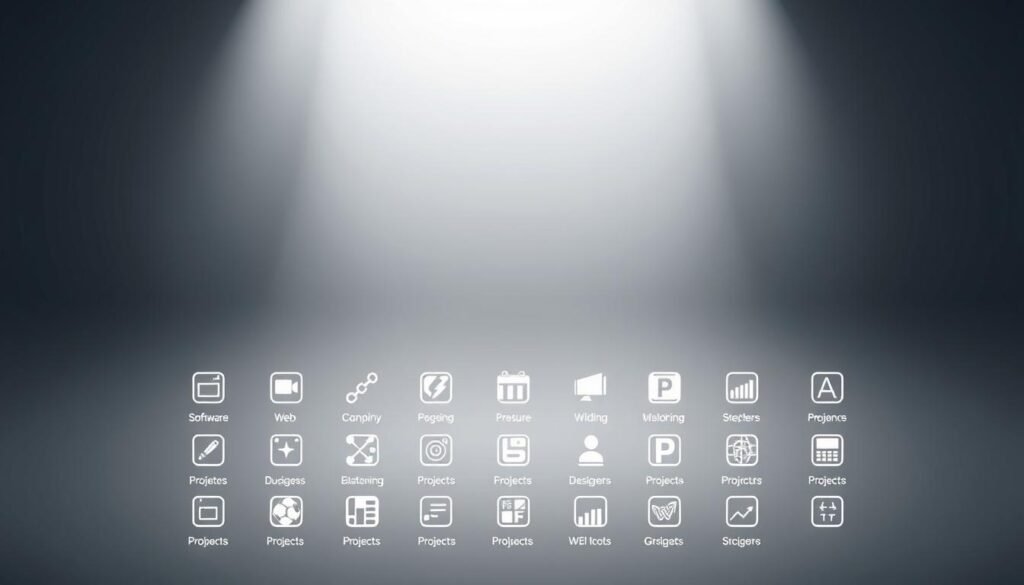
Master core tools first. Fluency in industry software like Adobe Illustrator, Photoshop, and InDesign is table stakes. I work in real files and under time limits so my work is production-ready.
Layer web and UX fundamentals
I add web and digital design basics: responsive layout, accessibility, UX flows, and light HTML/CSS awareness. That lets me collaborate with developers and contribute beyond visuals.
Typography, color, and portfolio that sells
I treat typography and color as force multipliers. Clear type hierarchy and consistent color systems speed approvals and lift perceived value.
I build a portfolio that tells the full story: problem, process, outcome, and metrics. Certifications like Adobe Certified Professional help early on, but shipped projects matter most.
| Skill | Why it helps | Action |
|---|---|---|
| Adobe suite | Daily production work | Practice with real briefs |
| Web/UX | Cross‑team value | Learn responsive and basic HTML |
| Typography & color | Improves clarity | Study systems and test palettes |
| Portfolio & courses | Validates results | Show metrics, take short training |
“A compact, proven skill set wins higher pay more often than titles alone.”
Roles with higher ceilings related to graphic design
Below I outline nearby careers that often pay more and the skills that close the gap.

Web developers and digital designers
Web and digital roles blend visual work with code. Median pay sits near $95,380, and the top 10% exceed $192,180.
Learn basic HTML/CSS, responsive layouts, and collaborative workflows. That software fluency makes you credible fast.
UX and product design
UX roles focus on research and flows that improve outcomes. Mid‑$90Ks is common for experienced practitioners.
Translate user insight into usable interfaces and you raise business value—and your pay.
Art direction and illustration
Art directors report medians above $111,040; top earners pass $211,410. Illustrators near $99,800 when paired with licensing or publishing gigs.
Leadership, storytelling, and a targeted portfolio unlock creative leadership and niche jobs.
| Role | Median (approx.) | Bridge skills |
|---|---|---|
| Web / Digital | $95,380 | HTML/CSS, responsive, collaboration |
| UX / Product | Mid‑$90Ks | Research, prototyping, user testing |
| Art Direction / Illustration | $99K–$111K+ | Storytelling, portfolio, licensing |
I recommend a 90‑day project to test one path. Use prior experience as leverage and learn the language of PMs, engineers, and marketers to operate at higher levels.
How I’d map a path toward $100K+: strategy, skills, and offer design
I map a practical route to $100K+ that blends a steady role, niche work, and tight offer design.
Specialize and position
I pick niches with clear business outcomes—SaaS onboarding, direct‑response ads, or brand systems for scaling startups. Specialization lets me charge higher rates and skip generic debates.
My portfolio highlights 3–5 projects that prove the niche with results. That shows fit fast and shortens sales cycles.
Multiple income streams
I keep a stable full‑time role for base salary and benefits. Then I add 1–2 retainer clients plus occasional licensing or template sales.
This mix is how I push total money beyond the salary ceiling without burning out.
Pricing, negotiation, and scope control
I package offers with clear deliverables and tiers. Anchors and ROI‑focused proposals help me negotiate better rates.
I protect margins with fixed slots for communication, checklists, and a light CRM so admin doesn’t eat deep work.
“Specialize, stack streams, and guard scope to hit six figures faster.”
| Strategy | Why it works | Action | Expected effect |
|---|---|---|---|
| Niche focus | Clients pay for outcomes | Build 3–5 case studies | Higher rates |
| Income stack | Stability + upside | Full‑time + retainers + licensing | Predictable growth |
| Packaged offers | Limits scope creep | Tiers, anchors, contracts | Better margins |
| Quarterly steps | Skill compounding | Add motion/prototyping each quarter | Faster rate growth |
Education and training that pay off: degree, courses, and real experience
Education that pays off balances syllabus, portfolio outcomes, and industry signals. Employers often prefer a bachelor degree in graphic design or a related field, and NASAD accreditation is a helpful quality signal.
That said, alternative routes speed results. Certificates, diplomas, and intensive courses build software fluency and portfolio pieces faster than a long program.
Bachelor’s degree vs alternative routes: what employers actually look for
I weigh a bachelor against alternatives by asking what hiring teams screen for: a strong portfolio, working knowledge of software, teamwork, and proof you can ship projects.
When time or cost matters, I target courses that produce portfolio work quickly—brand systems, responsive web, or editorial projects.
Internships, hackathons, networking, and joining professional groups
Practical experience tightens skills fast. I combine internships, apprenticeships, and entry freelance to sharpen my instincts and deliverables.
- I join AIGA or local chapters and attend meetups; most leads come through people.
- I enter hackathons to get cross‑team practice and case studies with measurable outcomes.
- I pursue Adobe Certified Professional status to validate tool knowledge to hiring managers.
“A short program plus real projects often beats credentials without work to show.”
| Option | Strength | Action |
|---|---|---|
| Bachelor (NASAD) | Deep theory + network | Use it to access larger employers |
| Certificates / courses | Fast portfolio focus | Choose projects that show web and typography skills |
| Experience | Proof of shipping | Internships, hackathons, freelance |
Graphic design vs adjacent careers: which pays more and why
Comparing adjacent careers clarifies why some paths pay much more than core visual work.
Data points matter: a graphic designer reports a median near $61,300, while web and digital roles sit around $95,380. Art direction tops out over $111,040, and illustrators often reach about $99,800.
I attribute higher pay in web and digital roles to technical depth, product impact, and direct ties to company revenue. Art direction pays more because it adds leadership, cross‑team influence, and ownership of visual strategy.
- Add product thinking, analytics, and production‑ready files to close the gap.
- Keep core skills—typography, layout, and color systems—and learn key software or frameworks for the target job.
- Choose a career target and build two case studies that mirror role expectations.
“The amount you earn per year correlates with ownership over outcomes, not just deliverables.”
| Path | Median | Why it pays |
|---|---|---|
| Graphic designer | $61,300 | Visual craft, brand work |
| Web / digital | $95,380 | Technical fluency, product impact |
| Art direction | $111,040+ | Leadership, strategy |
I weigh lifestyle tradeoffs and company maturity—startups often add equity, enterprises offer steady cash. My practical tip: test one adjacent project under real constraints to validate fit and pay trajectory before switching roles.
Conclusion
Here’s the short, actionable summary. The data and my experience show graphic design roles are sustainable today and graphic designers make solid median salary figures when they prove outcomes. Use this info as a checklist for next steps.
I’d follow one clear path: focus on core skills, build case studies, and speed up becoming graphic designer through targeted work. A tight portfolio proves value faster than a long resume, whether you pursue a bachelor degree or shorter courses.
Learn the process teams use, ship measurable projects, and speak the language of the company you want to join. That combination shifts what a designer earns and opens adjacent paths—product, web, UX, or art direction.
Take one step this week: ship a case study, refine your positioning, or ask a hiring lead one question. Small moves compound; over time, your work—not luck—shapes how much money you capture.


